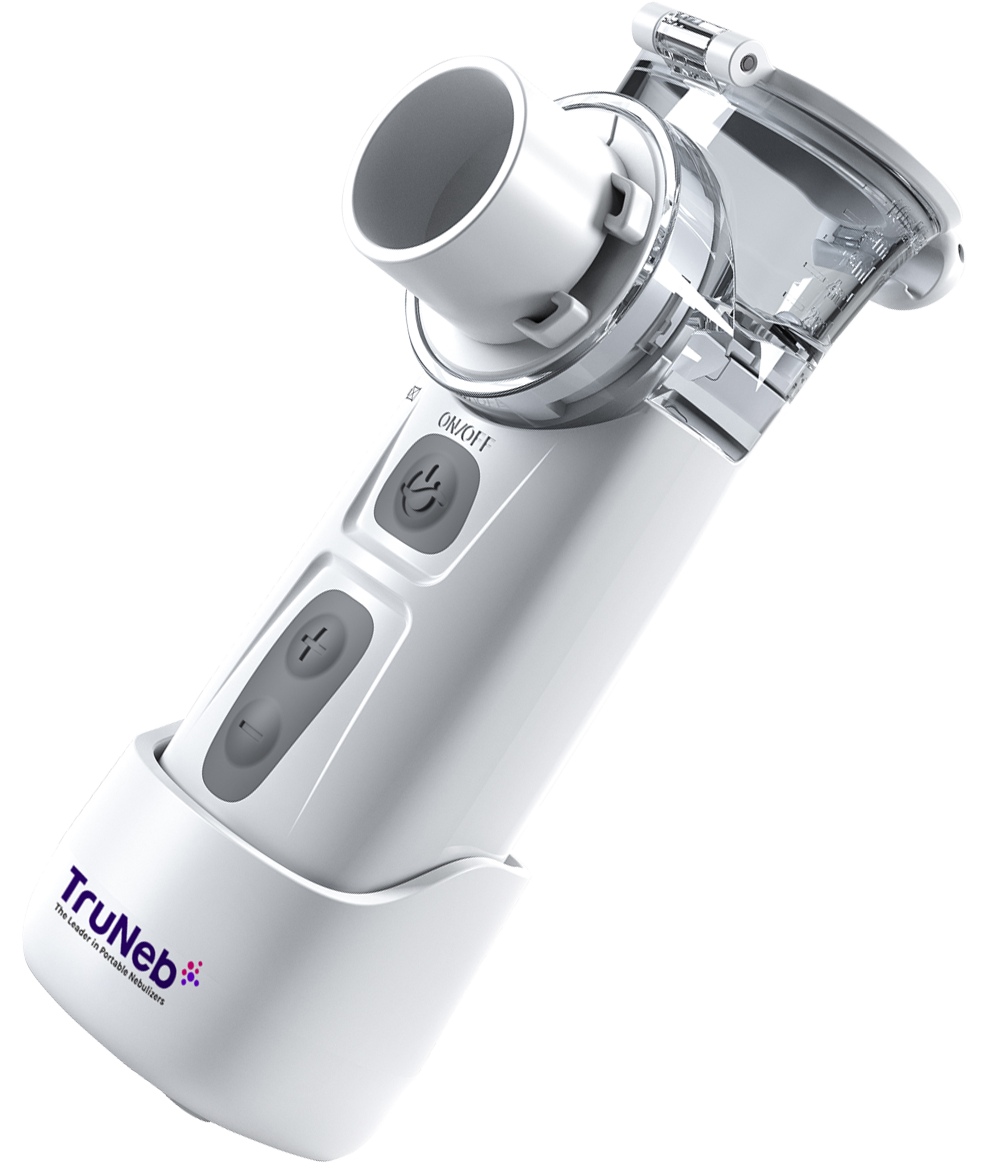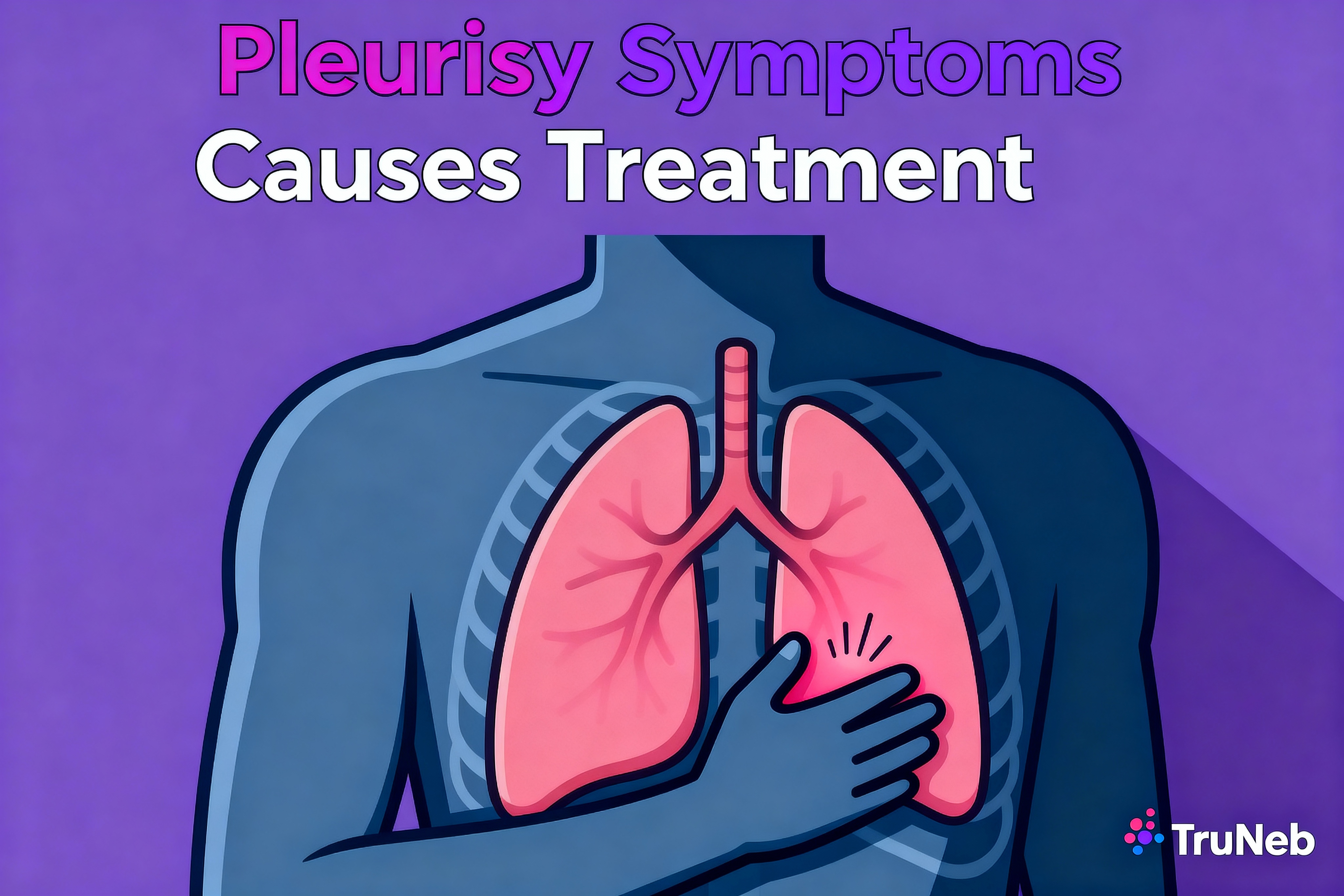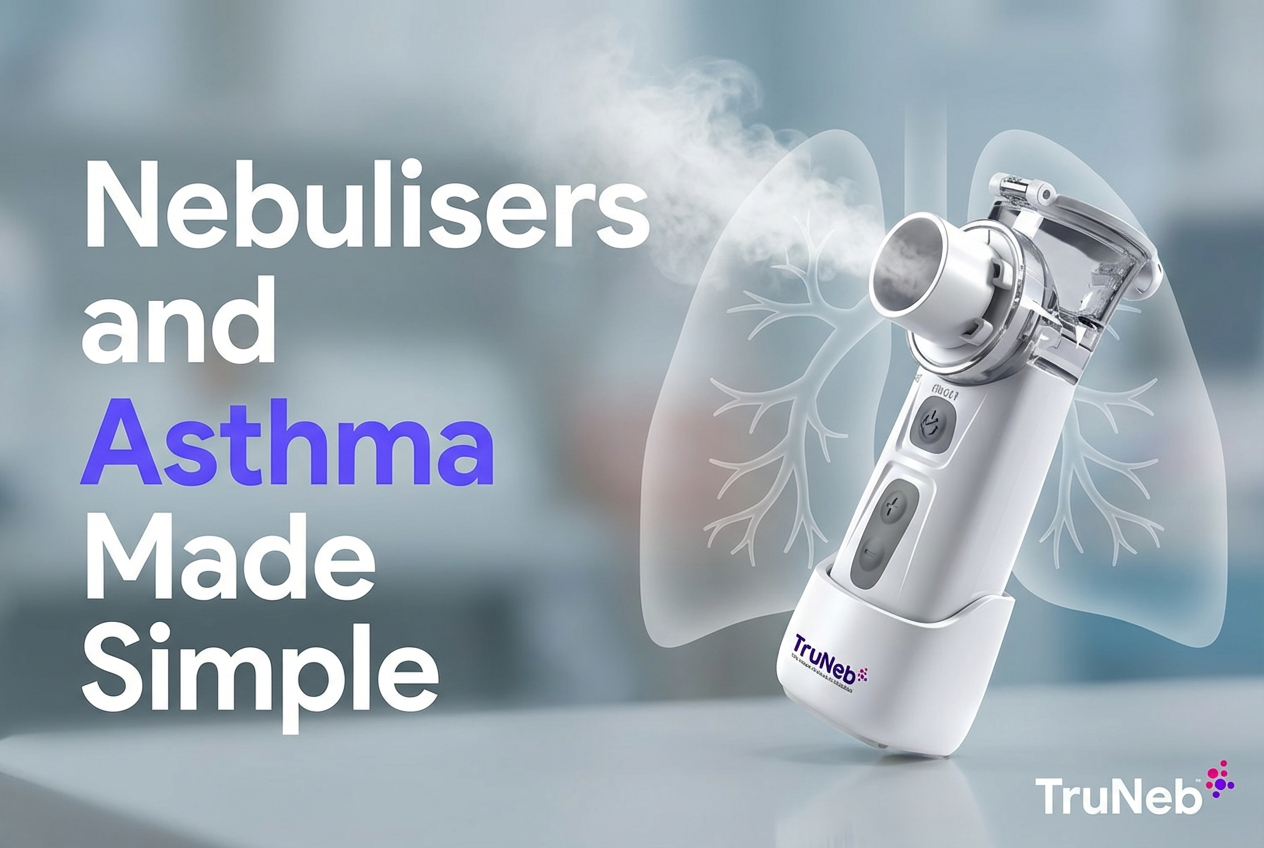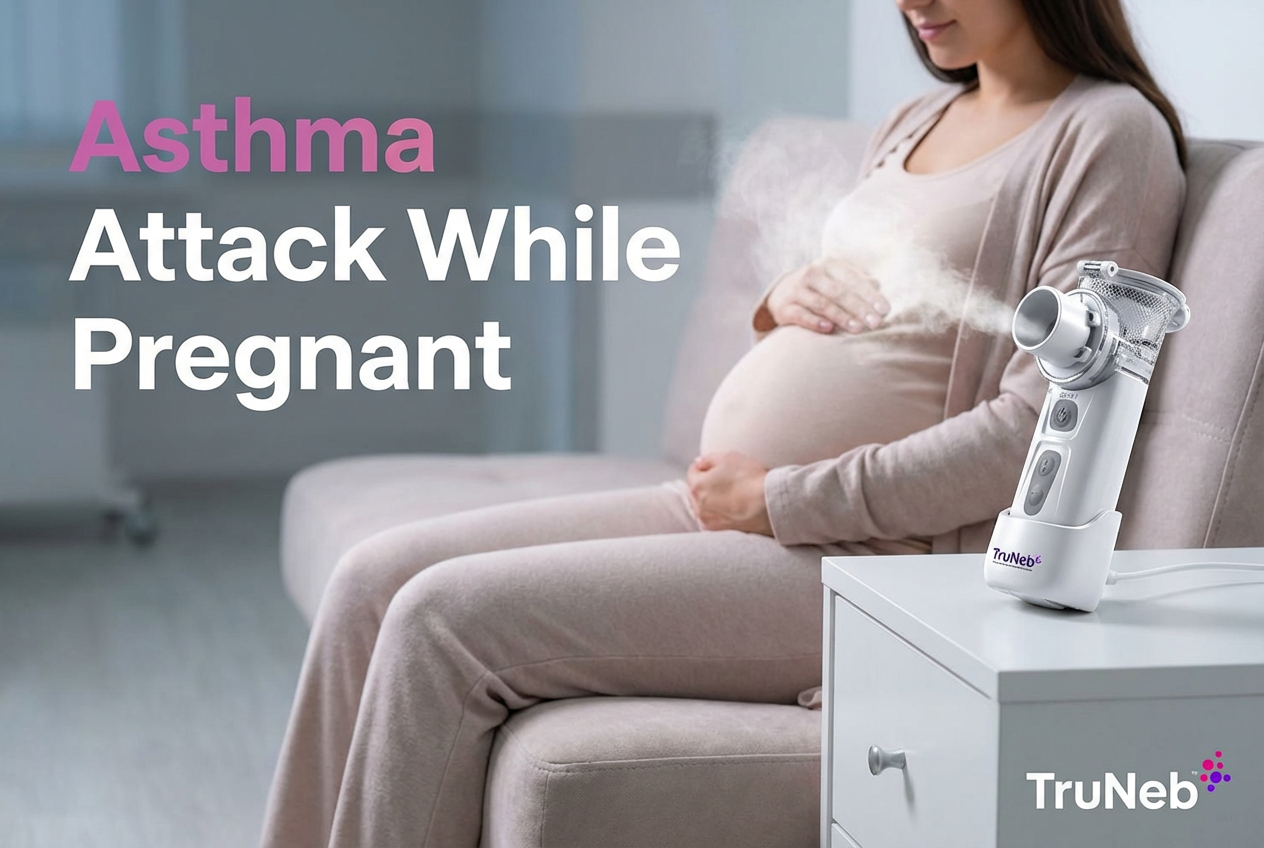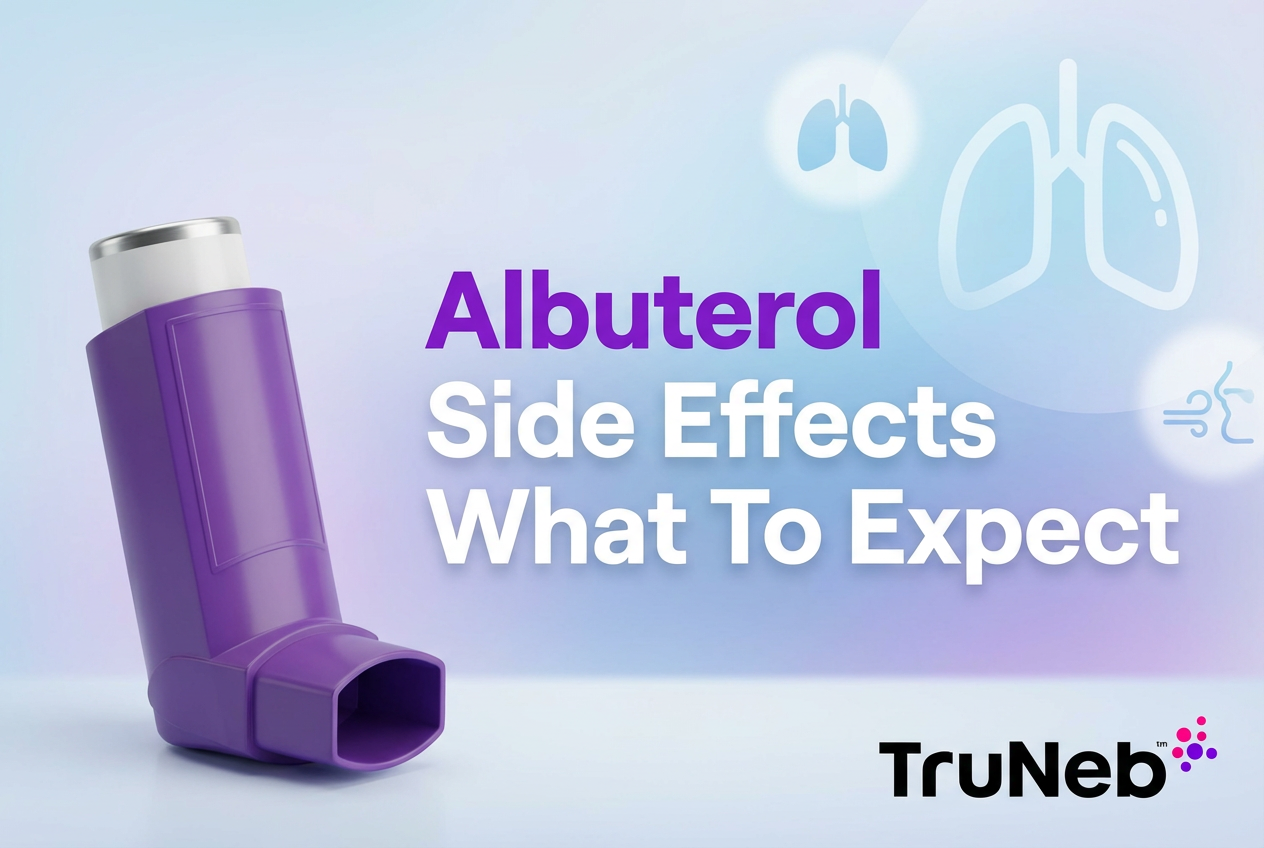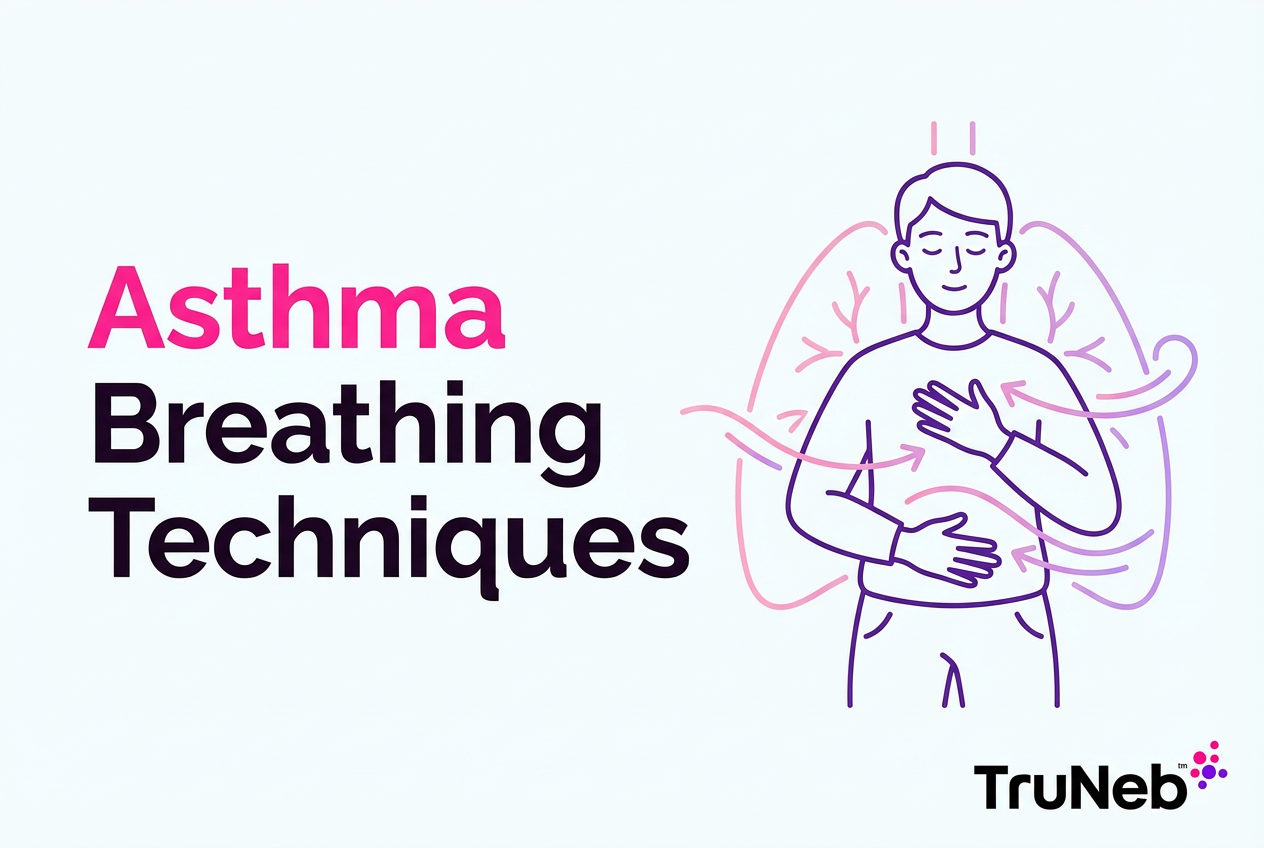On this page
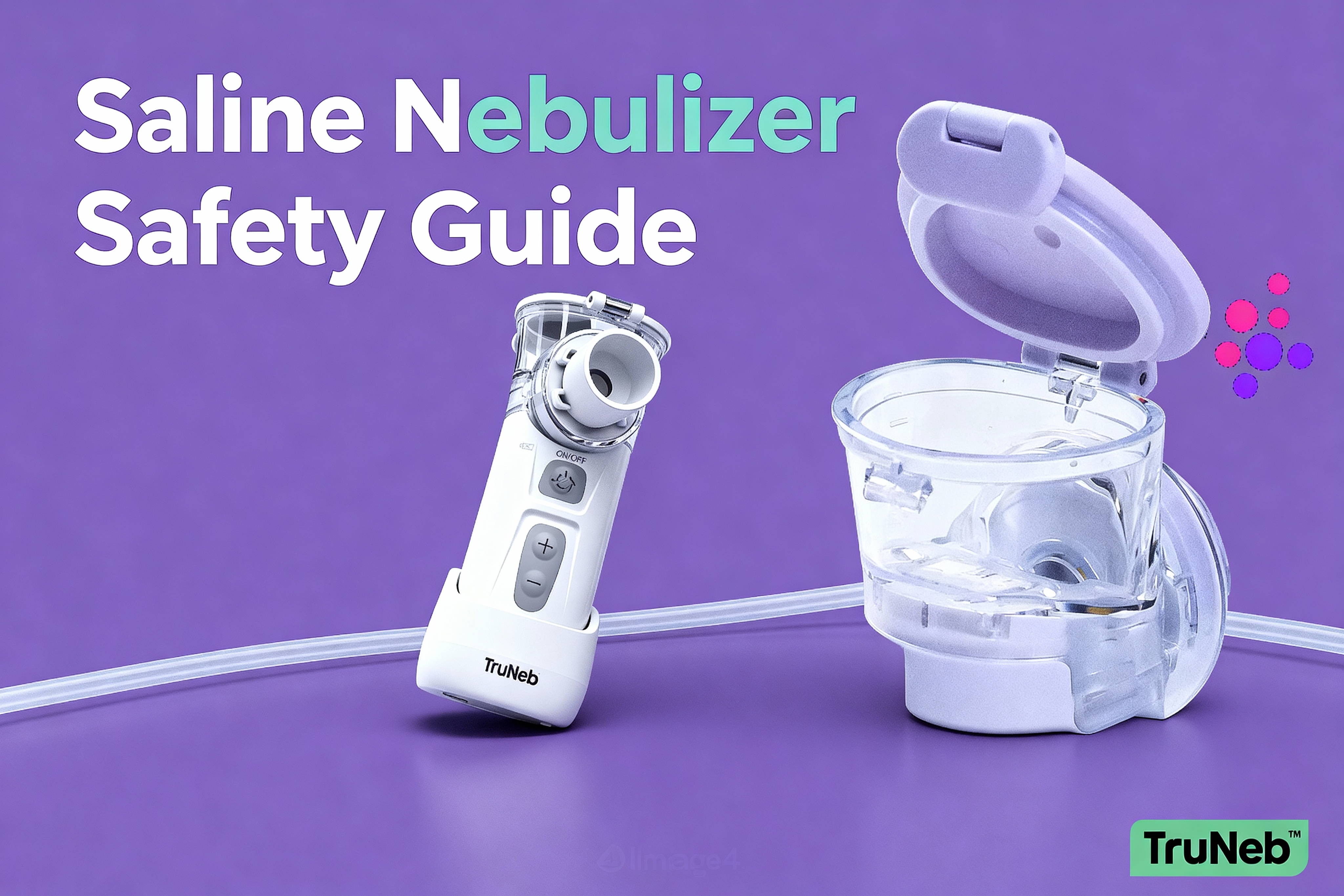
Is Saline Safe to Use in a Nebulizer?
Yes—when you use the right kind: sterile 0.9% normal saline labeled for inhalation. It’s safe to nebulize and is used in homes and clinics.
Use saline that is sterile and preservative‑free, follow your device’s instructions, and keep your nebulizer clean. Use saline labeled for inhalation; don’t substitute nasal sprays or contact lens solutions.
Key takeaway: Normal saline is safe to nebulize when it’s sterile, labeled for inhalation, and used with clean equipment.
What Is Saline Solution for Nebulizers?
Normal saline is simple: an isotonic 0.9% sodium chloride solution in sterile water. It matches your body’s natural salt level, so it’s gentle on airway tissue. Pharmacies sell it in single‑use plastic vials labeled for inhalation.
People nebulize saline by itself to add moisture and loosen mucus, or with medications as the carrier fluid.
Key takeaway: Normal saline is sterile salt water that matches your body’s fluids, which is why it’s well‑tolerated in the lungs.
Why Nebulize Saline? Real‑World Benefits
- Hydrates dry airways: A fine saline mist can soothe irritated throats and bronchial tubes.
- Loosens thick mucus: Added moisture helps thin phlegm so you can cough it up more easily.
- Calms cough and congestion: Moist airways can reduce coughing fits and help you breathe more comfortably.
- Helps medications work as intended: Saline is commonly the diluent that carries meds evenly into the lungs.
- Drug‑free option: Because it’s just sterile salt water, it can be used alongside your care plan at home or in clinics.
Key takeaway: Saline can hydrate, thin mucus, and support medication delivery without adding another drug.
Types of Saline for Nebulizers
- Normal saline (0.9%): The everyday choice for moisture and gentle mucus loosening. Commonly sold over the counter in unit‑dose vials.
- Hypertonic saline (3%–7%): A stronger option that draws more water into mucus. It can help in conditions with very sticky mucus, but it can trigger extra coughing in sensitive airways. Use it only if your doctor recommends it. Some strengths (especially 7%) require a prescription in certain regions.
Tip: Always choose solutions labeled "for inhalation." TruNeb™ also offers 3% and 7% hypertonic saline options that are sterile and designed for nebulizer use. See the comparison table below for a quick side‑by‑side.
Key takeaway: Use 0.9% for general relief; use stronger saline only when your doctor says it’s right for you.
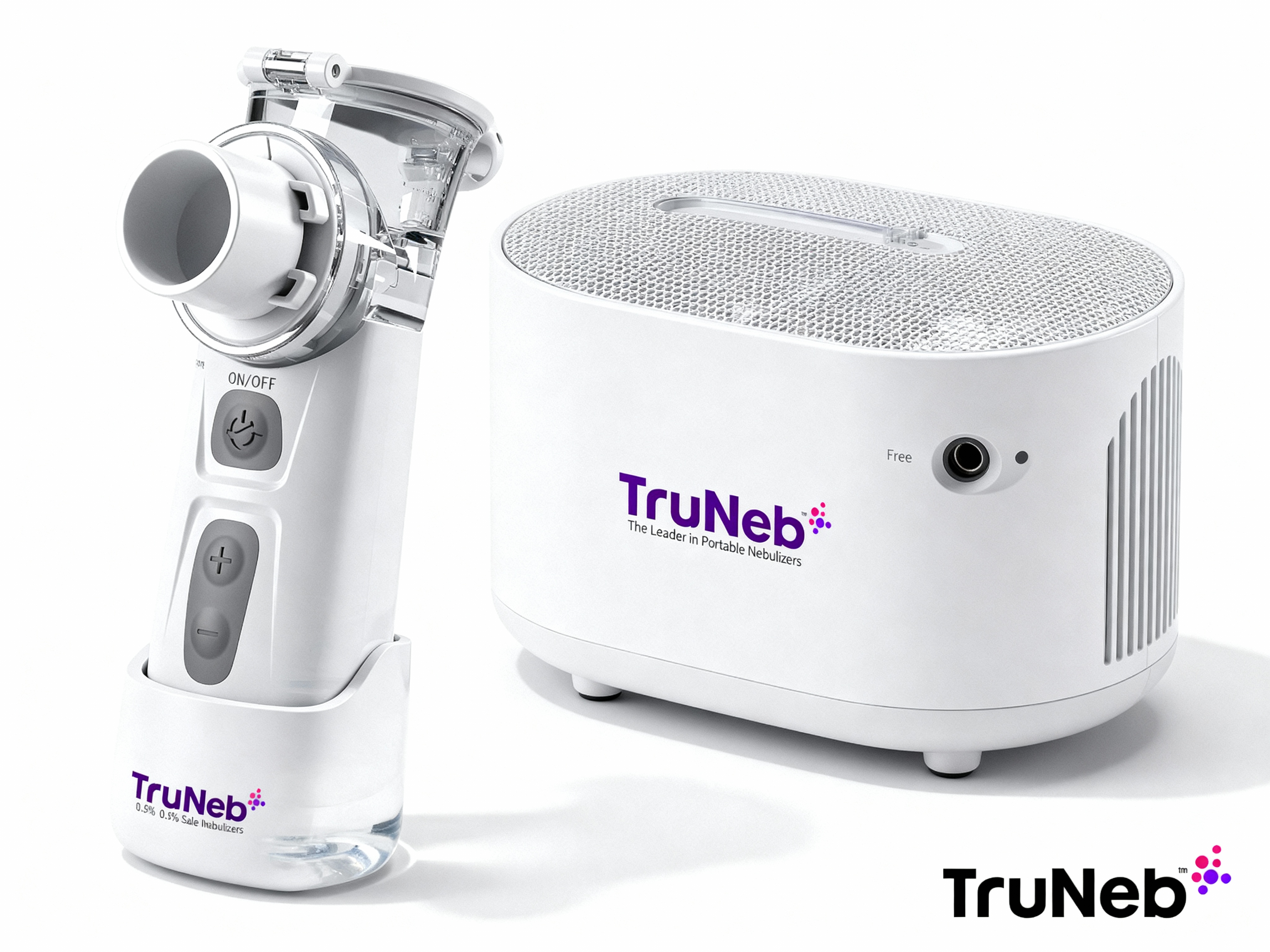
Choose the Right Saline and What Not to Use
- Pick this: Sterile, preservative‑free saline vials labeled for inhalation (single‑use).
- Avoid these:
- Nasal saline sprays (not intended for deep lung delivery; can include additives).
- Contact lens saline or multi‑purpose solutions (can include preservatives not meant for lungs).
- Homemade saline (hard to keep sterile and the concentration can be off).
- Plain tap or distilled water (not saline; can irritate airways and raises infection risk).
- Steam inhalers (these are not nebulizers and are not for breathing medications).
Not sure which type to choose? See “Types of Saline for Nebulizers” and talk to your doctor.
Key takeaway: If it’s not sterile and labeled for inhalation, don’t put it in your nebulizer.
How to Nebulize Saline Safely
- Wash your hands and set up your nebulizer.
- Open a sterile 0.9% saline vial and add the amount on the vial or your device manual’s fill level; most cups run best with a small, measured volume. If you use a portable mesh nebulizer like TruNeb, fill to the marked line.
- Attach the mouthpiece or mask and sit upright.
- Turn on the device and breathe in the mist slowly until the cup is empty; sessions typically last a few minutes. Pause to cough out loosened mucus if needed.
- Empty leftovers, rinse parts as directed, and clean your nebulizer after use.
- Frequency: Some people use saline multiple times a day during illness or dryness—ask your doctor what’s right for you.
Key takeaway: Use sterile saline, breathe slowly, and clean your device every time.
Normal vs. Hypertonic Saline at a Glance
| Saline type | Concentration | Common use | Tolerance | Availability |
|---|---|---|---|---|
| Normal saline | 0.9% (isotonic) | Moisture and gentle mucus thinning | Generally well tolerated | Widely available OTC in single‑use vials |
| Hypertonic saline | 3–7% (hypertonic) | Thinning very thick/sticky mucus | May increase cough/wheeze in sensitive airways | Usually clinician‑directed; higher strengths may require a prescription |
Note: Product availability and prescription requirements can vary by region. Follow your clinician’s guidance.
Safety Tips and Possible Side Effects
For nebulized saline safety, stick with sterile vials and a clean device.
- Use fresh, sterile vials: Open, use, and discard. Don’t save leftovers.
- Clean your device: Rinse and disinfect as your manual says to prevent bacteria and mold.
- Expect mild cough or throat tickle: This can happen as mucus loosens. It usually passes quickly.
- Hypertonic caution: Stronger saline can cause extra cough, wheezing, or mild bronchospasm in reactive lungs. First use is sometimes supervised.
- No add‑ins: Don’t mix essential oils or unapproved liquids into saline.
- Store right: Keep saline in a cool, dry place and check dates.
⚠️ If you have severe trouble breathing, chest pain, blue lips/face, or confusion, seek emergency care right away.
If symptoms don’t improve or worsen, talk to your doctor.
Key takeaway: Sterile saline and clean gear keep saline nebulizing safe.
Special Situations: Babies, Pregnancy, and Chronic Conditions
- Babies and kids: Pediatricians commonly recommend saline nebs for bronchiolitis and bad colds because it’s drug‑free and helps clear tiny airways. Use a child‑sized mask and go slow.
- Pregnancy and breastfeeding: Sterile saline is generally considered safe since it’s not a medication and acts locally in the lungs; check with your doctor.
- Asthma and COPD: Saline can help with moisture and mucus, but it doesn’t replace rescue or controller meds. Hypertonic use should be guided by your doctor.
Key takeaway: Saline is widely used across ages; follow your doctor’s plan for special cases.
Where Saline Fits vs Other Treatments
- Saline vs albuterol or other meds: Saline adds moisture and helps clear mucus; it does not open airways like a bronchodilator. People commonly use saline alongside their prescribed meds.
- Nebulizer saline vs room humidifier: A nebulizer delivers a measured, sterile mist straight to your lungs. A humidifier changes room air and may not target the lower airways as effectively.
- Steam inhaler ≠ nebulizer: You might see products labeled “steam inhaler” — these are NOT for breathing medications or deep lung delivery.
Key takeaway: Think of saline as supportive care that pairs well with your prescribed treatments.
Frequently Asked Questions
Tap or click a question below to see the answer:
Daily use is generally safe, and many people do 1–4 sessions per day during illness or dry seasons. Because saline is drug‑free, there’s no strict limit—follow your clinician’s guidance and reduce frequency if you feel irritation.
Normal saline (0.9%) unit‑dose vials are commonly available over the counter. Higher strengths (for example, 7% hypertonic) may require a prescription or clinician direction depending on your region—ask your doctor.
No. Use sterile, preservative‑free saline labeled for inhalation. Nasal sprays can contain additives and aren’t intended for deep lung delivery.
No. Saline doesn’t open airways like a bronchodilator. Use your prescribed rescue medication for attacks; saline can be used alongside your treatment plan.
It’s not recommended. Home mixes are hard to keep sterile and the concentration can be off. Use pharmacy vials labeled for inhalation.
Bottom Line
Sterile 0.9% saline is a safe option for most people when used correctly. Use inhalation‑grade vials, keep your device clean, and follow your care plan. A portable nebulizer like TruNeb can make saline treatments easy at home or on the go.
Talk to your doctor if you’re unsure which saline to use or how often to nebulize.
Key takeaway: Safe saline use comes down to three things—sterility, proper technique, and clean equipment.
Disclaimer: This article is for informational purposes only and isn’t a substitute for professional medical advice. Always talk to your doctor about your symptoms and treatment options.

